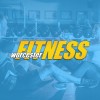
You have many options to get your NASM CEU (Continuing Education Unit), and NouFlex certifications. In this article, you can find out more information about the National Academy of Sports Medicine's various courses. You should also know how much it costs to take the Courses. To get started, you can visit the NASM website.
Prices
The cost of NASM CEU courses depends on the program you choose. You can pay up to $559 to become an accredited personal trainer. You can upgrade to higher-level programs if you wish to increase your knowledge in nutrition, client relations and professional development. These additional courses may not prove to be of benefit to you.
You must earn at least 2.0 CEUs (continuing educational units) each year to recertify. These credits may be earned by completing field work or academic coursework. CEUs can be earned by passing the CPR/AED exam.
FAQ
Can I eat while I exercise?
Yes. Yes. You should choose low-calorie snacks, such as watermelon (carrots, celery), apples, bananas and grapes. These foods are high in nutrients, which can improve your performance during training.
What is the importance of good nutrition?
We need to eat well for our health and wellbeing. Healthy eating includes whole grains, fruits, vegetables, lean protein, dairy, and other healthy foods. Eating nutritious foods helps us stay fit and active, which leads to better overall health.
Which Is Most Important: Diet, Exercise, or Sleep?
Your goals will dictate the answer. Weight loss is possible by following a healthy diet. However, if you want to gain muscle mass, then exercise is the most important factor for building muscles. The last factor is sleep, which only impacts how well you perform during your day.
Why is physical fitness important for your health?
Fitness is crucial for our health. Regular exercise is essential for maintaining our health, weight, strength, flexibility, cardiovascular system, and overall well-being. Exercise also helps us sleep better at night, reduces stress, improves self-esteem, and increases energy levels throughout the day.
Statistics
- Globally, 81% of adolescents aged 11-17 years were insufficiently physically active in 2016. (who.int)
- In 2018, the World Health Assembly agreed on a global target to reduce physical inactivity by 15% by 2030 and align with the Sustainable Development Goals. (who.int)
- Adolescent girls were less active than adolescent boys, with 85% vs. 78% not meeting WHO recommendations of at least 60 minutes of moderate to vigorous intensity physical activity per day. (who.int)
- In high-income countries, 26% of men and 35% of women were insufficiently physically active, as compared to 12% of men and 24% of women in low-income countries. (who.int)
External Links
How To
How to Burn Belly Fats Faster
Belly Fat is often thought of as a problem when trying to lose fat. But if you think about it, Belly Fat is actually a good thing. Your organs will be protected by the amount of belly fat. Let's look at how to rapidly lose belly fat.
The main factors that lead to body fat storage are stress and lack exercise. Because stress stimulates the release of cortisol hormone, it makes us hungry all the time. Cortisol is responsible for an increase in insulin levels. The insulin stores the excess calories as fat. An increased appetite can be caused by a lack of sleep. Exercise helps to break down these extra calories.
There are many ways to reduce belly fat. Any one of these can be tried, depending on how much you have to spend. These are some ways to quickly lose belly fat.
-
Reduce the amount of food you eat. Eat smaller meals throughout the day rather than eating three big ones. This will result in fewer calories.
-
Drink plenty of fluids. Water flushes out toxins in your body and helps you stay hydrated. Drinking water before meals will help you feel fuller for longer, so you don't overeat.
-
Avoid eating unhealthy snacks. If you're looking for quick fixes, snack foods like chips, cookies, candies, etc. might seem tempting. Avoid these unhealthy treats. They are full of empty calories, too much sugar, and can be very fattening. Choose healthy options like whole grains, fruits, vegetables, nuts, seeds and nuts.
-
Do strength training exercises at least three times per week. Strength training builds muscle mass which burns more calories even while resting. It strengthens bones muscles ligaments, tendons and the heart.
-
Walking or stretching is a good habit to do regularly. Stretching improves flexibility and mobility which can reduce back pain. Walking can help you burn calories.
-
Reduce alcohol intake. Reduce alcohol intake. Alcohol is a waste of calories and has no nutritional value.
-
Lose weight gradually. Your current weight is the first step to losing weight. Then, add 5% to 10% to your body weight to get your ideal weight. Once you have established your ideal weight, reduce your daily calorie intake by 500 to 1000 calories each day until you achieve your goal.
-
Avoid processed foods. These foods are high on sugar, salt, and additives. Although they are convenient, processed foods don't have enough nutrients to sustain your health.
-
Don't skip breakfast! Eating breakfast improves concentration, memory, and energy level. Breakfast should include protein (like eggs), fiber (like oats), and complex carbohydrates (like oatmeal).
-
Have regular bowel movements. Constipation and irregularity can cause gas and bloating. This can be prevented by drinking plenty of water and increasing fiber intake.